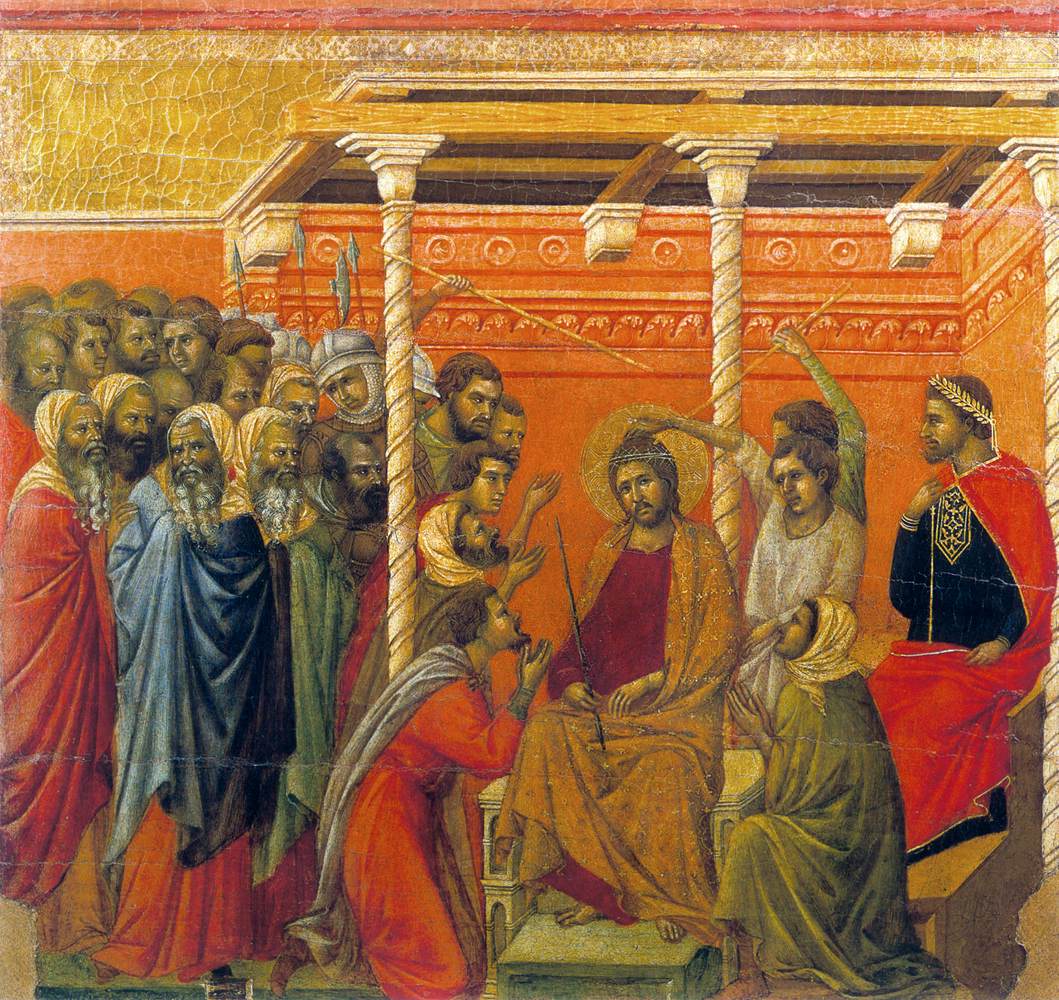Description
The painting Crown of Thorns (scene 17) by Duccio Di Buoninsegna is a masterpiece of medieval art that stands out for its artistic style and composition. The work, which measures 50 x 54 cm, depicts the crowning of Jesus Christ with thorns, a tragic event that became a symbol of human suffering and divine redemption.
Duccio's artistic style is characterized by its realism and detail, which can be seen in the expression of pain on Christ's face and in the texture of the thorns that surround his head. The composition of the work is also impressive, with Christ in the center surrounded by Roman soldiers who mock and torture him.
The color of the paint is another interesting aspect, with a palette of dark and somber tones that reflect the sadness and suffering of the scene. However, there are also touches of bright color in Christ's red robe and in the gold details of the soldiers' armor, adding an interesting contrast to the work.
The history of the painting is also fascinating, as it is believed to have been created for the Siena Cathedral in the 14th century. The work was one of the first to show the crowning with thorns as a separate event from the crucifixion, making it a pioneering work in Christian iconography.
As for little-known aspects, it is known that the painting was stolen in the 19th century and that it was lost for more than 50 years before being recovered and restored. The work is also believed to have been one of the main influences on the most famous work of art in history, The Last Supper by Leonardo da Vinci.
In summary, the painting Crown of Thorns (scene 17) by Duccio Di Buoninsegna is a masterpiece of medieval art that stands out for its artistic style, its composition, its color and its history. A work that continues to captivate art lovers and is considered one of the most important works of Christian iconography.

